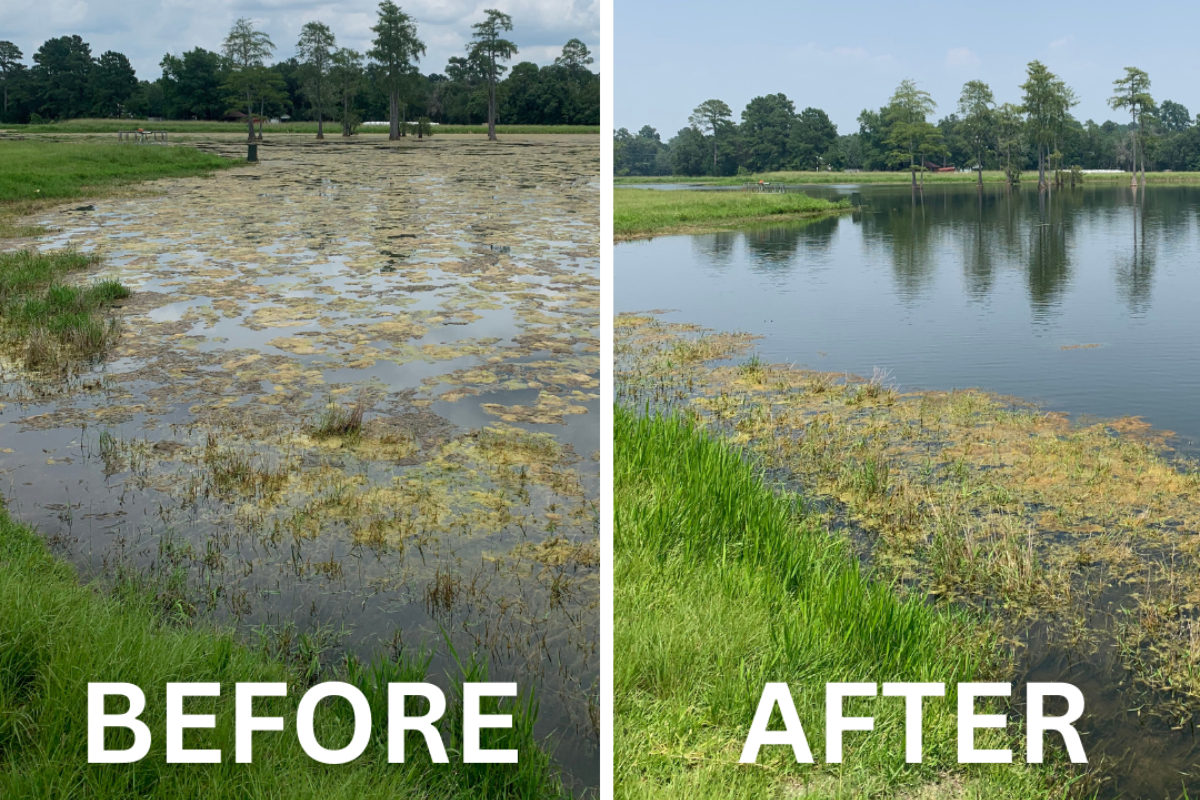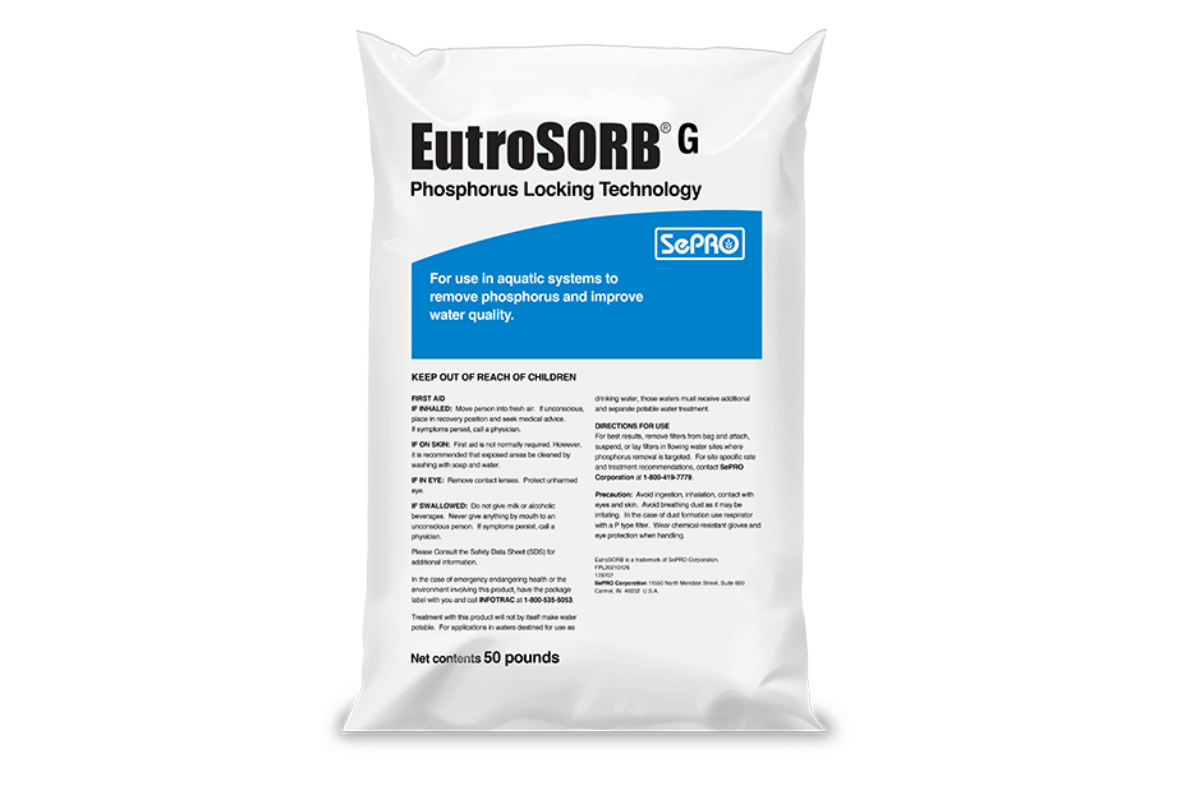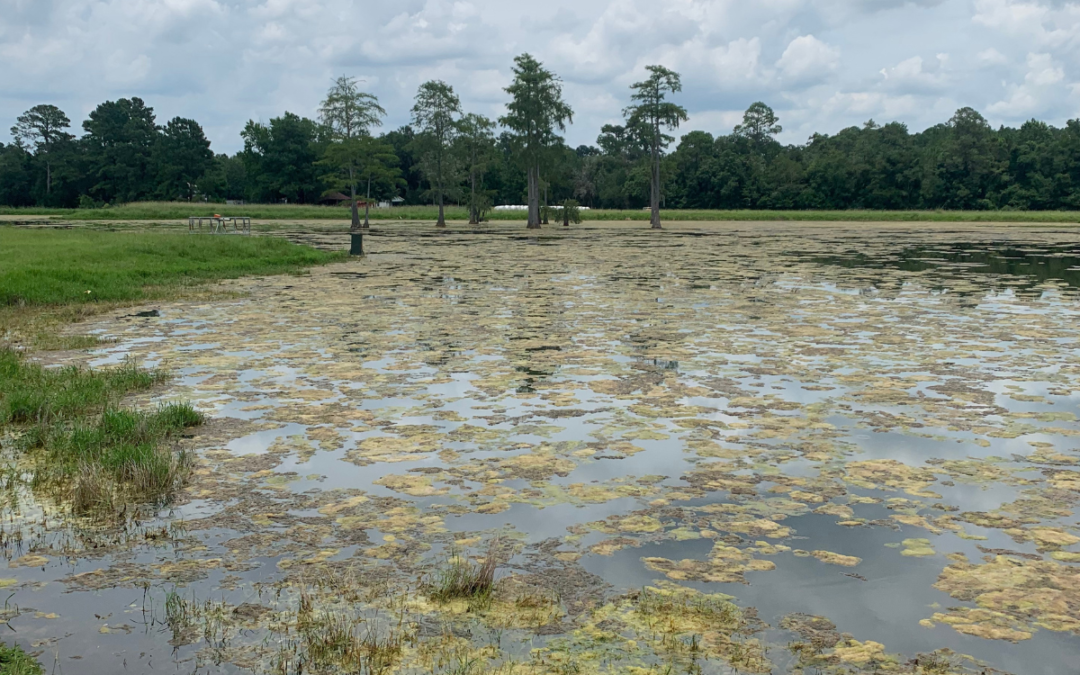Our previous blog discussed how excessive phosphorous in the water can cause harmful algal blooms in ponds and lakes. When concentrations are elevated as a result of fertilizer runoff or sediment leaching, algae starts to thrive. In this blog we’ll share some recent experiences we’ve had dealing with excess phosphorous and repeated attempts to eliminate pond algae. We’ll also discuss how we’ve recently modified our approach to treating persistent pond algae.
Our Previous Approach to Pond Algae
Pond algae is pretty easy to kill by spraying the affected areas of the pond surface with approved aquatic herbicides. We can usually treat a large area of a pond or lake at one time and it will be gone pretty quickly after spraying. This approach works well in most cases.
However, we’ve had one pond lately that was puzzling. We sprayed this pond a couple years ago and was able to quickly eliminate all the algae. But the following year, the algae was back with a vengeance. We sprayed it again, killed all the algae, and once it again it returned the following year. This led us to believe that we were dealing with a water chemistry issue here. Excess phosphorous was being likely being added to the water, causing a repeated algae issue each year.

Where’s the Phosphorous Source?
After performing some water chemistry tests, we concluded that the repeated algal blooms were a result of increased phosphorous concentrations in the water. This excess phosphorous was not coming from agricultural runoff, so it had to be coming from the sediment. As we discussed in our previous blog, this can be an issue in older ponds where organic matter has accumulated in the sediment over many years.
In the cooler months, we add lime to many of the ponds we manage. This helps to release bound nutrients from the sediment, improving water fertility. Improved water fertility leads to stronger plankton populations, which stimulates the base of the pond food chain. It also helps reduce water clarity so that subsurface weeds don’t thrive. But in the case of this pond, liming was releasing a significant amount of bound phosphorous from the sediment.

Our New Approach to Pond Algae
Once we understood how the excess phosphorous was causing the continual algal blooms, we started to approach the issue from a water chemistry perspective. We discovered a product called “EutroSORB” that is used to solve eutrophication issues in ponds and lakes. Eutrophication a fancy word for the increased algal production as a result of additional phosphorous or nitrogen in a pond or lake.
EutroSORB is a great product that binds the excess phosphorous in the water without compromising water quality. Once the excess phosphorous is bound by EutroSORB, the algal populations can no longer thrive. It can used as a preventative tool in ponds that have accumulated phosphorous in the sediment, and also as a restorative tool for ponds that have significant algae issues.
Implementing phosphorous binding products like EutroSORB into our vegetation management plans has been a game changer. Instead of immediately resorting to chemical removal of algae, we now look at what is causing the algal blooms to repeatedly occur. We determine the source of the excess phosphorous and try to eliminate or bind it. In addition to using products like EutroSORB, adding aeration to ponds can help prevent the anoxic layer at the bottom which leads to phosphorous leaching.
Let Up Help Improve Your Pond!
If you’re in the south GA or north FL areas and have algae issues in your pond or lake, complete this form and we’ll contact you to schedule a time to meet. We look forward to turning your pond into a productive fishery for years to come!

